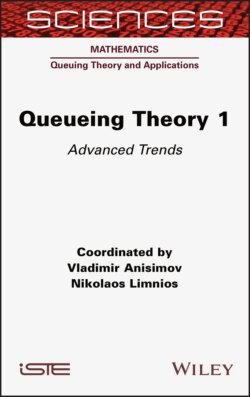Читать книгу Queueing Theory 1 - Nikolaos Limnios - Страница 27
1.5.2. Matrix equivalent model
ОглавлениеConsider three square matrices D0, D1 and D2, with capturing the probability of transition from state i to state j, with k = 0, 1, 2 event occurring. The event 1 is type 1 success, event 2 is type 2 success and event 0 is no success of either type. We assume that the matrix D = D0 + D1 + D2 is a stochastic matrix, which is irreducible. Further, we define π = πD, π1 = 1. Keeping in mind that the event of having both type 1 and type 2 successes at the same time is zero, then our DTMC is
If the DTMC is positive recurrent, which we assume it is, then we have
where .
From the matrix-geometric theorem of Neuts (1981), we know that there is a matrix R, which is the minimal non-negative solution to the matrix quadratic equation
and because of the theorem and the special structure of the boundary of the DTMC we have
From this result, all the other performance measures such as the waiting time and busy period can be obtained.
